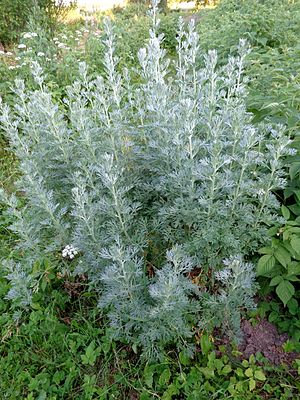Note: This is a project under development. The articles on this wiki are just being initiated and broadly incomplete. You can Help creating new pages.
Difference between revisions of "Artemisia - Indhana"
Chaithrika (talk | contribs) (+Common names) |
m (Prabhakar moved page Indhana to Indhana (Artemisia)) |
(No difference)
| |
Revision as of 10:44, 29 March 2018
Indhana or Artemisia is a large, diverse genus of plants with between 200 and 400 species belonging to the daisy family Asteraceae. Common names for various species in the genus include mugwort, wormwood, and sagebrush.
Artemisia comprises hardy herbaceous plants and shrubs, which are known for the powerful chemical constituents in their essential oils. Artemisia species grow in temperate climates of both hemispheres, usually in dry or semiarid habitats.The leaves of many species are covered with white hairs.
Description
Wormwood is a perennial herb with a hard, woody rhizome. The stems are straight, growing to 0.8-1.2 m (rarely 1.5 m) tall, grooved, branched, and silvery-green. The leaves are spirally arranged, greenish-grey above and white below, covered with silky silvery-white trichomes, and bearing minute oil-producing glands. The basal leaves are up to 25 cm long, bipinnate to tripinnate with long stalks. Stem leaves are smaller, 5-10 cm long, less divided, and with short stalks. The uppermost leaves can be both simple and stalkles. Flowers are pale yellow, tubular, and clustered in spherical bent-down heads, which are in turn clustered in leafy and branched panicles.[1]
Uses
- The aromatic leaves of some species are used for flavouring. Most species have an extremely bitter taste.
- Indhana was used to repel fleas and moths, and in brewing.
- It is used as a remedy for indigestion and gastric pain.
- Artemisinin (from Artemisia annua) and derivatives are a group of compounds with the most rapid action of all current drugs used to treat malaria.
- Chinese mugwort, Artemisia argyi, is used in the traditional Chinese medicine.
- Artemisia austriaca has beneficial effects in reducing the withdrawal syndrome of morphine.[2]
Common name
- English - Wormwood
- Kannada - ಉರಿಗಟ್ಟಿಗೆ
- Hindi - vilayati afsantin
